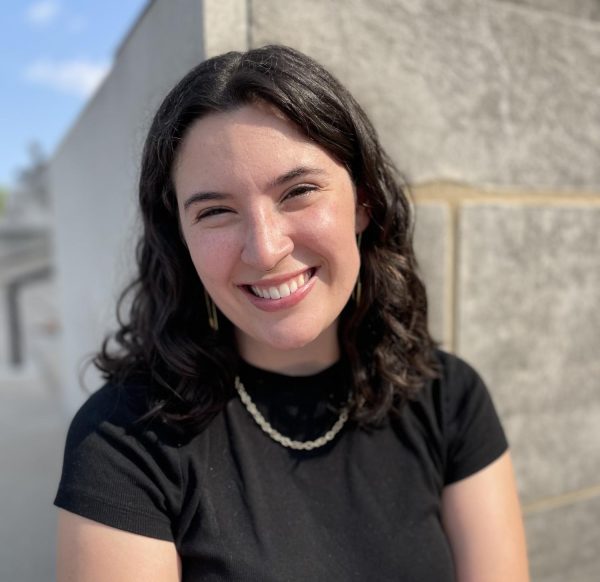SLAM hosts annual art in bloom
A celebration of spring, Art in Bloom is an annual festival at SLAM, Saint Louis Art Museum. Each year, dozens of pieces at the museum are selected to be interpreted through floral design. Artists took various approaches, with some producing more literal visual replicas of the works and others taking a more imaginative approach. A couple of pieces stood out this year.
“Watts 1963,” Kerry James Marshall
Floral Interpretation by Rebecca Bodicky
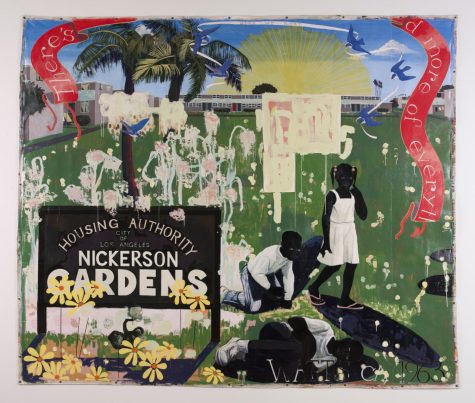
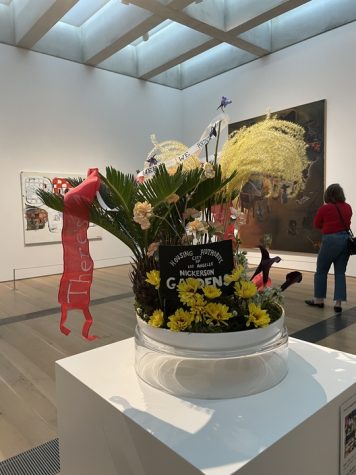
Rebecca Bodicky, a STL-based floral artist, created a floral imitation of Kerry James Marshall’s painting “Watts 1963.” Bodicky opted to highlight the physical features of the painting, rather than the thematic elements.
Marshall’s work explores narratives of Black history through exceptionally detailed paintings. His Black figures are arguably one of the most recognizable attributes in his work. In fact, the only time that Marshall uses true black paint in his work is when he is painting Black figures- all other black pigments used in his paintings are blended with other colors. The 1995 painting “Watts 1963,” depicts children playing in Nickerson Gardens in the Watts neighborhood of Los Angeles. The area is marked by a large sign reading “Housing Authority City of Los Angeles Nickerson Gardens,” with a partially hidden red banner above and another thin white banner held by bluebirds. The black paint’s thematic importance was in some ways lost in the floral interpretation, as the sign featured in the center of the painting was the only black element in the design.
However, this may be an exemplification of the floral artist’s emphasis on this particular element. Bodicky used several artificial elements, creating the banners with ribbon and the sign with paper stock. Larkspur, a bluish violet flower, surrounded the white ribbon banner, presumably a representation of the bluebirds in the painting. Though tiny in the painting, the white banner holds great significance. It reads “Here We Rest,” Alabama’s first state motto, a contrast to the otherwise LA themed piece. This banner could have been another motif to explore in the floral piece, as it is essential to understanding Marshall’s artistic choices because of his upbringing in Alabama and subsequent experience in LA.
Bodicky cites the children as a main source of inspiration for the piece. In her writing that accompanied the floral design, Bodicky questions whether the children are playing happily or not. “Their expressions land you in a state of confusion,” Bodicky said.
This inspiration was perhaps lost in translation, as there is no obvious floral element pointing to the children or a sense of confusion. Their lack of expression in the painting, though, may be translated into the lack of these figures in the floral piece.
From an instrumentalist perspective, Marshall’s work is highly “successful,” while Bodicky’s merit may be highest from a formalist perspective. At a glance, Bodicky’s representation of “Watts 1963” provides a near perfect visual replication but lacks the emotional significance that Marshall’s work so frequently emphasizes.
“On the Ice Near Dordrecht,” Jan van Goyen
Floral Interpretation by Lindsey Rawlings
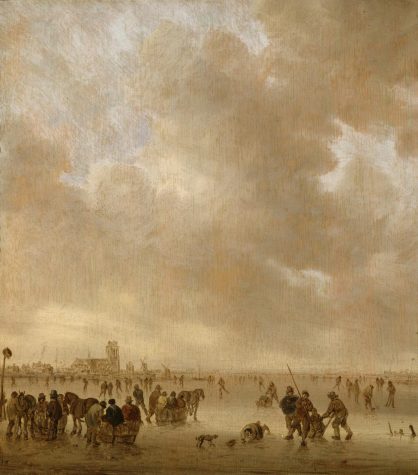
Van Goyen’s “On the Ice Near Dordrecht” features a low horizon line, with the majority of the canvas depicting a mild sky with fluffy clouds. Below, a slim portion of the canvas shows characters skating on ice. The painting is said to highlight the flatness of the Dutch countryside, though floral artist Lindsey Rawlings
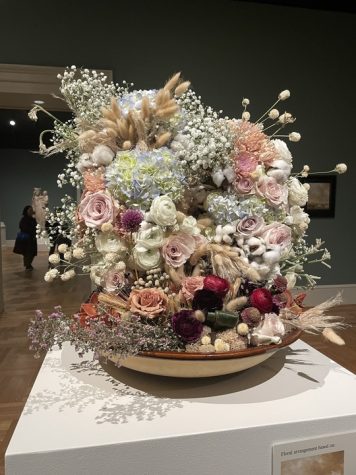
interpreted a much different perspective, focussing on the whimsical and soft clouds above.
Though still expressive, van Goyen relies on a fairly limited color palette to build light and shadows in the clouds. Rawlings followed suit, using a similar cool palette built by the pastel shades in hydrangeas, baby’s breath, white gomphrena, and cotton. “On the Ice Near Dordrecht” is frequently revered as a piece honoring the Dutch heritage, as Van Goyen himself is Dutch. Using her knowledge of floral design, Rawlings mirrored the ode-like sentiments of van Goyen’s piece by using flowers native to the Dutch. These included ranunculus, buttercups, tulips, and heather-each of which exemplified the different characters ice skating.
Rawlings’ piece focuses on the qualities of different flora to embody the emotive elements of van Goyen’s work.
“I have chosen to transform my arrangement with mounds of hydrangeas, baby’s breath, white gomphrena, and cotton to emulate the vast skyline,” Rawlings said in her inspiration statement. Her choice of flowers was deliberate and exemplary; soft and light flowers, in both texture and color, represented clouds, while native flowers exemplified the Dutch people.
Whether literal or expressive, the floral artists created an impressive show to ring in spring. Art in Bloom is a free annual three-day festival with special ticketed programs. Though the floral pieces are no longer available for viewing, information about the designs and artists is available online at https://www.slam.org/event/art-in-bloom-2023/. The original works replicated are all a part of the museum’s permanent collection.
Your donation will support the student journalists of Saint Louis University.
